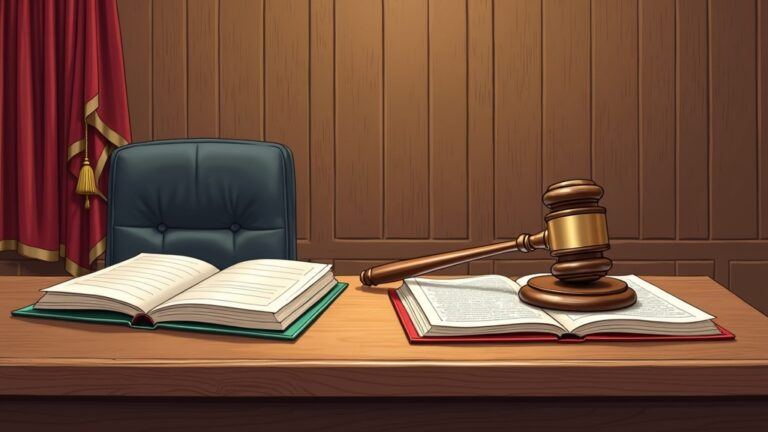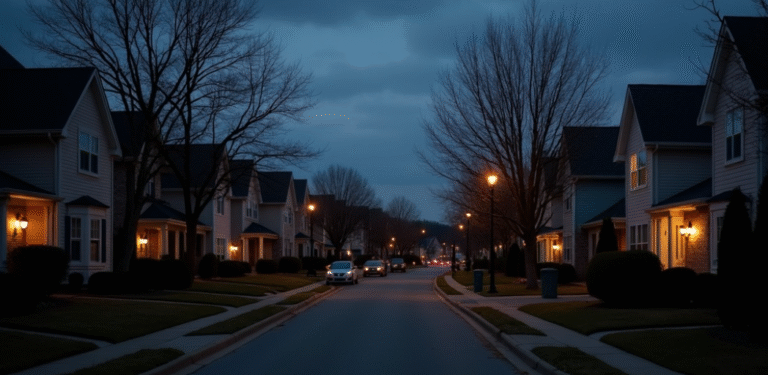Introduction
Crime cases leave deep marks not just on the victims, but also on their families and communities. The fallout can be emotional, physical, financial, and social, and it doesn’t tend to disappear overnight. Knowing what victims and their loved ones experience helps build a justice system that actually heals. So, I’m laying out what really happens when crime interrupts people’s lives and what we can do to make things better. Understanding the broader Impact Of Crime Cases On Victims is crucial for creating effective support systems.

Table of Contents
The Impact Of Crime Cases On Victims is profound and multifaceted, affecting not only the individual victim but also their families and communities.
Why the Impact of Crime Goes Far Beyond the Victim
I often hear crime discussed as something that happens to individuals, but the reality is that each case leaves a network of consequences. The victim might bear the brunt, but families, friends, and even neighbors feel the aftershocks. There’s usually a mix of grief, anxiety, disruption, and practical struggles popping up in every area of life. Giving space to these experiences makes room for the kind of changes that support long-term healing.
What Victims Face Right After a Crime
The first few hours or days after a crime are some of the hardest. People can find themselves in the emergency room, talking to police, trying to make sense of what just happened, or figuring out what’s missing or destroyed. Here are some of the most common immediate effects:
- Physical injuries: These range from minor scrapes to life-changing wounds or, in tragic cases, the loss of life.
- Shock and confusion: People often feel numb, disoriented, or can’t accept what happened right away.
- Loss of property or income: For victims of theft, arson, or scams, the practical fallout can be overwhelming.
- Fear for personal safety: The sense that “it could happen again” sticks around long after police leave.
All these reactions make it pretty tough for victims to bounce back to normal, even in the early days after a crime. Families are often called upon to provide not only immediate care but also lasting emotional support, which can bring its own set of challenges in the weeks and months ahead.
How Crime Changes Emotional and Mental Health
It’s honestly tough to grasp how deep the psychological toll can go. After being targeted, many people experience ongoing anxiety, sadness, anger, or numbness. These feelings aren’t always visible, but they shape how people live for years:
- Post-Traumatic Stress Disorder (PTSD): Nightmares, flashbacks, panic attacks, or avoiding anything that reminds them of the event.
- Anxiety and depression: These feelings can pop up weeks, months, or even years later.
- Insomnia: Many victims talk about trouble sleeping or disturbing dreams.
- Survivor’s guilt: Especially strong for people who lost a loved one or lived through shared trauma.
Extended psychological damage can also lead to lasting changes in personality or lifestyle, with some victims withdrawing or avoiding people and situations they once enjoyed. It’s pretty important for health providers and families to recognize these signs early, so people aren’t left to deal with the aftermath on their own. RAINN and organizations like NIMH have solid info on trauma support.
How Crime Affects Families and Everyday Life at Home
Crime cases don’t just impact the direct victim. Families face a domino effect of problems that can upend routines, relationships, and even the way a household functions:
- Secondary trauma: Family members, especially kids, can absorb stress and fear from a loved one’s experience.
- Shifting roles: If someone is injured or grieving, other people might have to step up at work or at home.
- Relationship strain: Emotional fallout puts major stress on marriages, partnerships, and parent–child bonds.
- Overprotection and isolation: Some families pull back from others or become fearful about going out, feeling safe, or trusting people.
This kind of upheaval can last for months, or even years, if families can’t access the right support or information. Sometimes, families also feel the need to move to a different neighborhood for safety, disrupting stability and connections even further.
The Financial Fallout for Victims and Families
Money issues usually pile on top of everything else. Medical bills, therapy, lost wages, and property damage are some of the first challenges, but they’re rarely the only costs:
- Doctors, emergency care, and medication (not always fully covered by insurance)
- Funeral and burial costs in cases of fatal violence
- Legal fees, especially when there’s a long investigation or trial
- Home repairs or having to move for safety reasons
- Lost jobs or reduced hours for both the victim and their caregivers
Consider also the indirect costs, like needing to pay for new locks, security systems, or childcare when a family member is recovering. Even when government compensation funds exist, most don’t fully cover the real-life cost of recovery.
Visit OVC.gov for more info on crime victim compensation in the U.S.
How Crime Alters the Long-Term Trajectory of Victims’ Lives
For a lot of people, moving on isn’t as simple as “getting over it.” Careers, friendships, and plans often get interrupted or derailed:
- Lots of victims drop out of school, switch jobs, or move to a new city to escape reminders of what happened
- Legal proceedings might drag out, prolonging stress and preventing closure
- There’s often real stigma, especially in cases of sexual assault or domestic violence
- People can struggle to rejoin their old community or social circle
These long-term disruptions may create a sense of lost potential or push victims and their families onto entirely new life paths. Long-term disruption is a really common part of the recovery process, and it shouldn’t be underestimated.
Roadblocks and Stressors in the Justice System
Going through the courts might sound like a path to closure, but it often adds a new layer of difficulty for victims and their families. Here’s what typically comes up:
- Victim blaming during investigation or trial
- Lengthy delays, sometimes it takes years before a case is resolved
- Reliving trauma through testimony or media exposure
- Plea deals or dropped charges can feel like justice denied
Support from advocates, like those from National Center for Victims of Crime, goes a long way for people stuck in a confusing process. Navigating procedures, paperwork, meetings, and court dates adds more stress, especially when victims feel left in the dark about their own case.
How the News and Social Media Turn Crime Into a Spectacle
Whenever a crime ends up in the news or on social media, things get a lot more complicated. Some victims welcome attention, but most find it overwhelming:
- Privacy disappears, leaving victims and families feeling exposed
- Reporters or online strangers can twist facts, spread rumors, or blame the victim
- Sensational coverage can cause re-traumatization
- Online harassment sometimes piles on, especially in high-profile or controversial cases
People who may want to share their truth are often discouraged by the onslaught of unfiltered comments and judgment from strangers. Balancing the right to know with real-life impacts means media needs to be more thoughtful about their approach.
Stigma and Social Withdrawal
Sadly, a lot of victims, or their families, end up feeling isolated. Sometimes it’s because others don’t know what to say, or because victims are treated like they did something to “invite” the crime:
- A sense of being “different” sets in
- Family and friends avoid hard conversations
- Communities sometimes gossip, judge, or distance themselves
- Certain crimes bring cultural or gender-related stigma
This withdrawal can make victims feel doubly punished. The support of friends and neighbors seriously affects how well people recover, and open communication often helps break down barriers a little at a time.
Support Networks That Really Make a Difference
Healing happens faster when victims and families get connected with resources and community members who know what they’re doing:
- Counseling and therapy: These services are super important for processing trauma and managing symptoms.
- Victim support organizations: Networks like Victim Support UK and local advocacy groups help people figure out legal claims, therapy, and financial assistance.
- Family and friends: Staying involved in a loved one’s recovery is more helpful than most people realize.
- Community: Churches, cultural groups, and neighborhood organizations can provide stability and a sense of belonging.
Making sure these resources are available and easy to find is super important for long-term wellbeing. Regular check-ins from those around the victim and family provide a crucial layer of emotional grounding, even when progress is slow. Schools, workplaces, and local groups can also play a big role by offering flexible support or adjustments during tough times.
Survivors Who Become Advocates and Leaders
Plenty of crime victims use their experiences to help drive change. Some start campaigns, join advocacy organizations, or talk publicly about what happened:
- Mothers Against Drunk Driving (MADD) was launched by parents who lost children
- Sexual assault and domestic violence survivors push for new laws and better support
- These efforts can help transform pain into purpose, but stepping into the public eye also calls for extra support
Many survivors become a voice for those who can’t or won’t speak for themselves. They often highlight gaps in current systems and guide new program development. However, it’s important for supporters to keep an eye out for signs of burnout, as advocacy can also reopen old wounds.
The Impact on Future Generations
Trauma doesn’t always end with the person who was directly harmed. Kids or other close family members might struggle later on, especially if support isn’t available:
- Children can develop anxiety, behavioral issues, or difficulty at school
- Trauma or grief might linger, shaping a family’s identity or routines
- Unresolved issues can influence relationships for years to come
Breaking this cycle takes patience and ongoing resources. Helping entire families, not just the direct victim, goes a long way toward ending patterns of isolation and emotional pain. Extra sensitivity in schools and social settings can help children, especially, process what they’re experiencing in a safe way.
Building Trauma-Informed Justice
Treating victims with understanding and care, rather than skepticism or impatience, changes everything about the process. Trauma-informed justice focuses on:
- Minimizing the risk of re-traumatization
- Giving dignity, choices, and support to those impacted
- Factoring trauma into everything from police responses to court proceedings
This approach helps people feel heard and respected, not just like evidence in a criminal case. It also allows justice professionals to get a better sense of how their decisions ripple out, helping them serve people rather than just following procedures.
How Communities and Society Can Step Up
If we want real recovery and prevention, there are plenty of practical steps communities can take:
- Offer low-cost or free counseling and support groups
- Create emergency funding or connect families to financial help
- Train law enforcement in how trauma works and what support actually means
- Hold systems accountable for treating victims fairly
- Make sure victims help set policies and reforms
Purposeful action leads to healthier, safer neighborhoods for everyone. Finding new ways for victims’ voices to be front and center can help shape policies that truly reflect community needs. Public education campaigns can also cut down on stigma and encourage people to get involved earlier.
Key Takeaways
For every crime case, there’s a web of people dealing with the fallout. Support, respect, and thoughtful policies help victims and their families rebuild, not just survive. Justice should help people heal, and understanding the impact of crime is one step toward making that real.
Contact Us:
If you need to contact us for any reason, please feel free to do so here!






